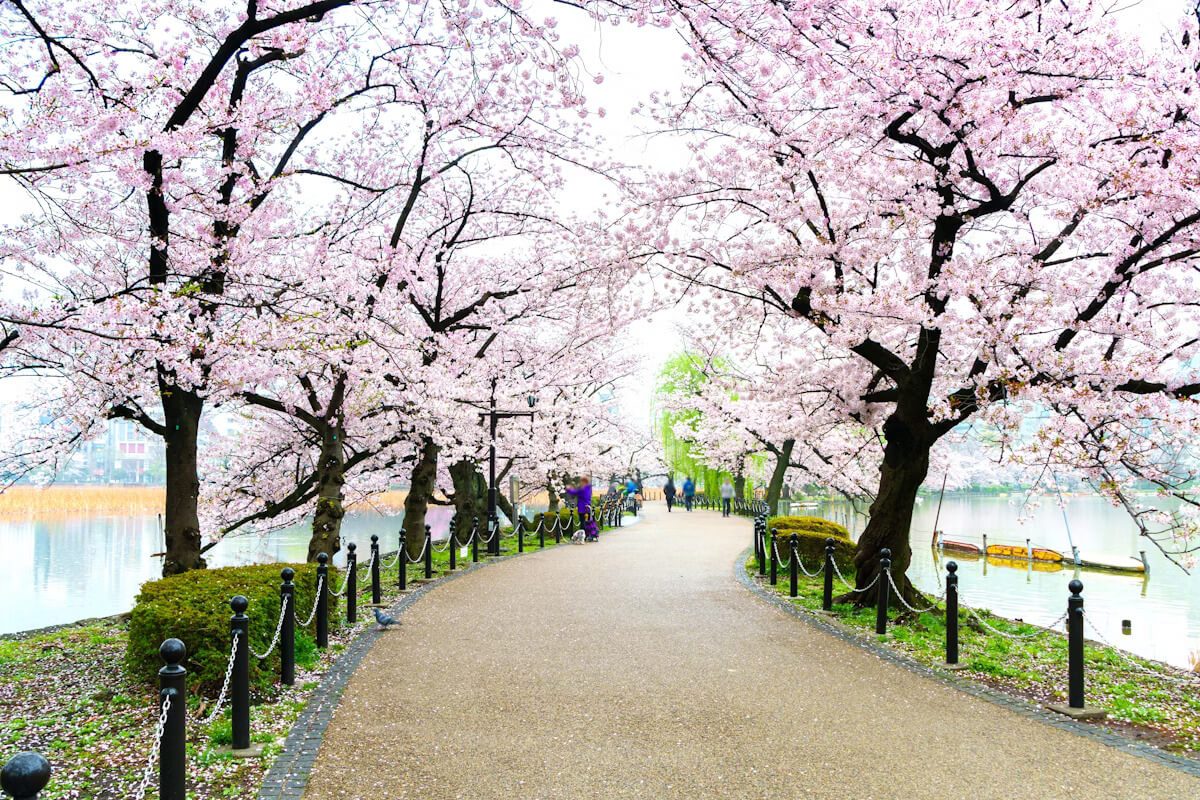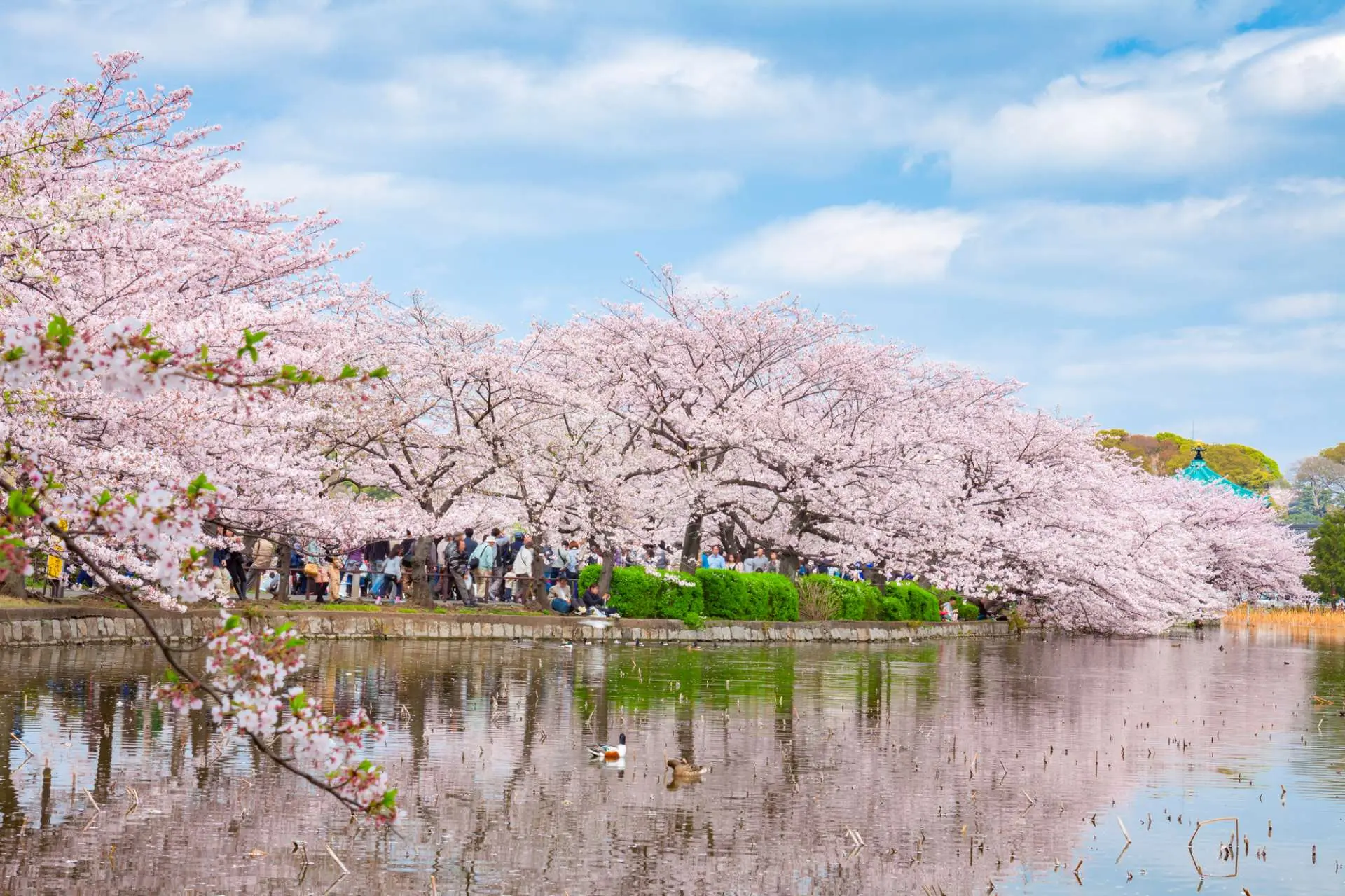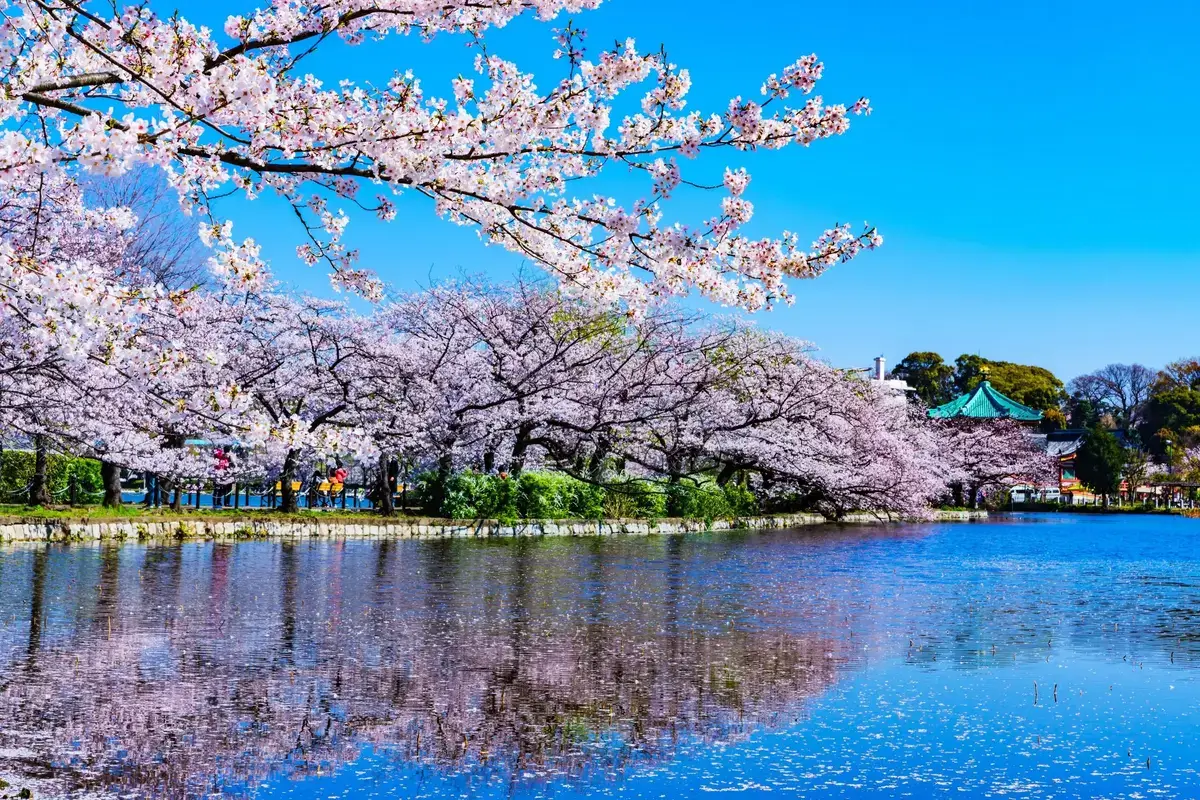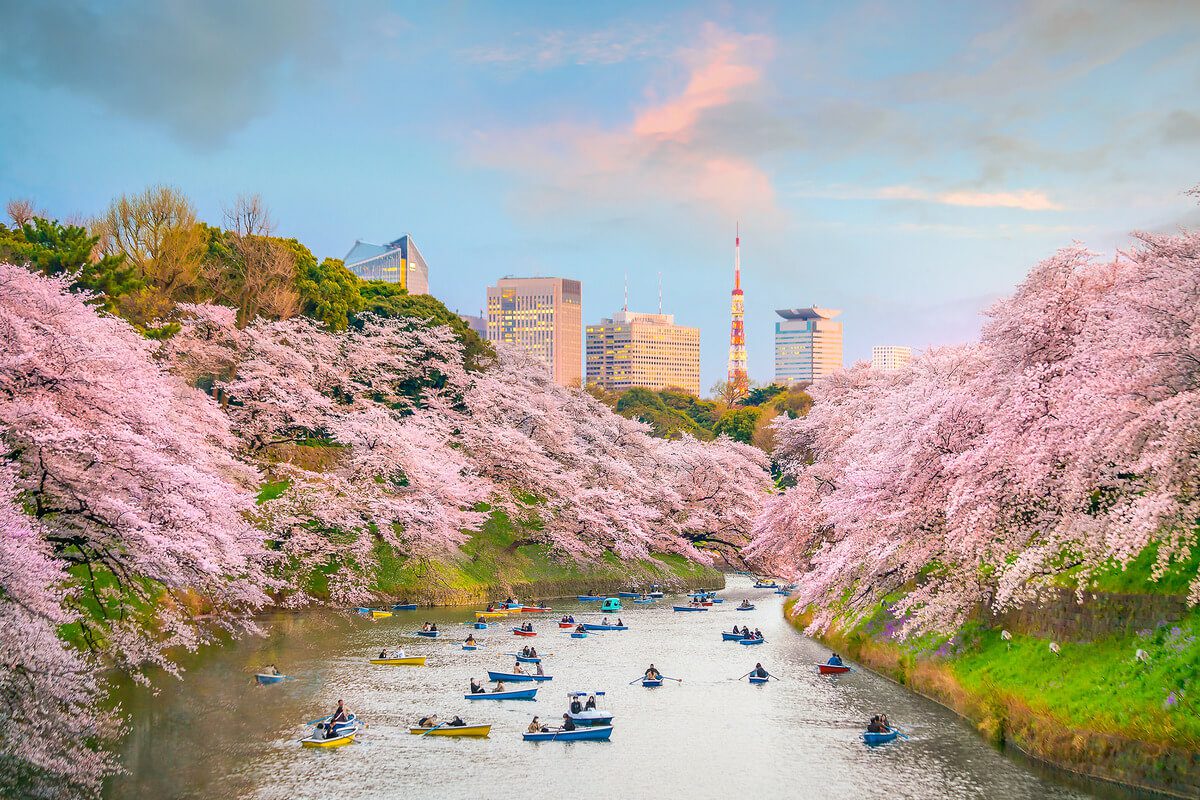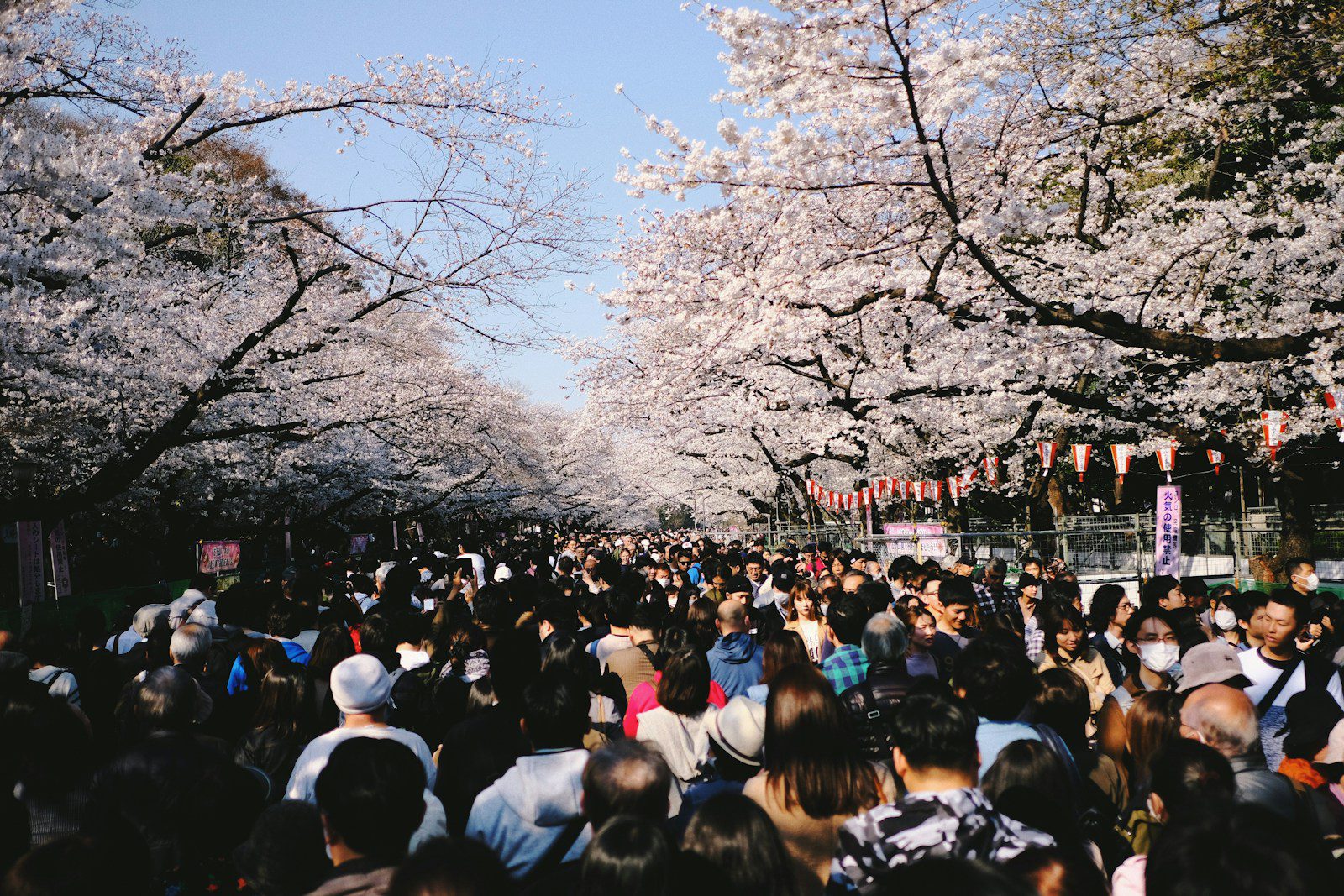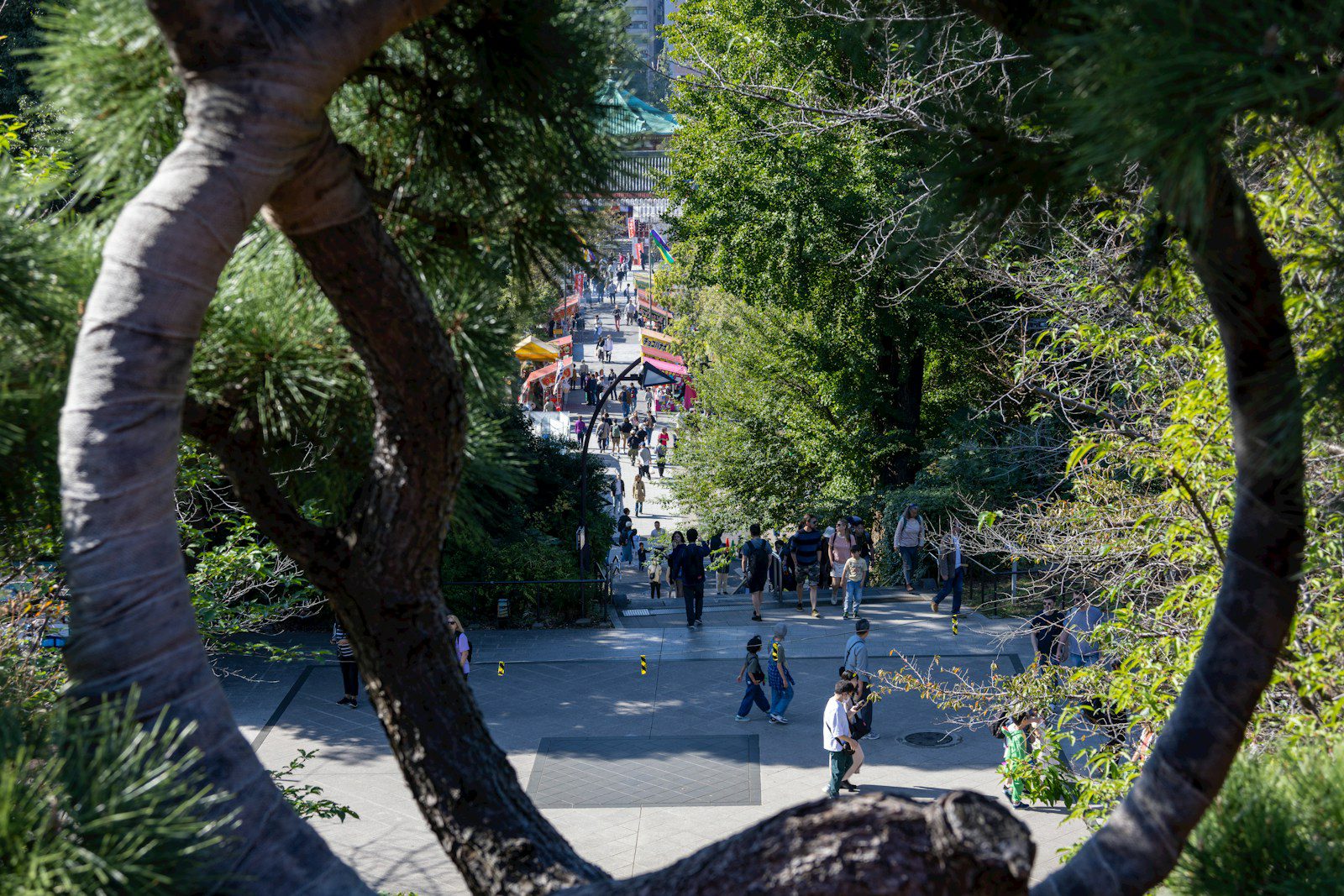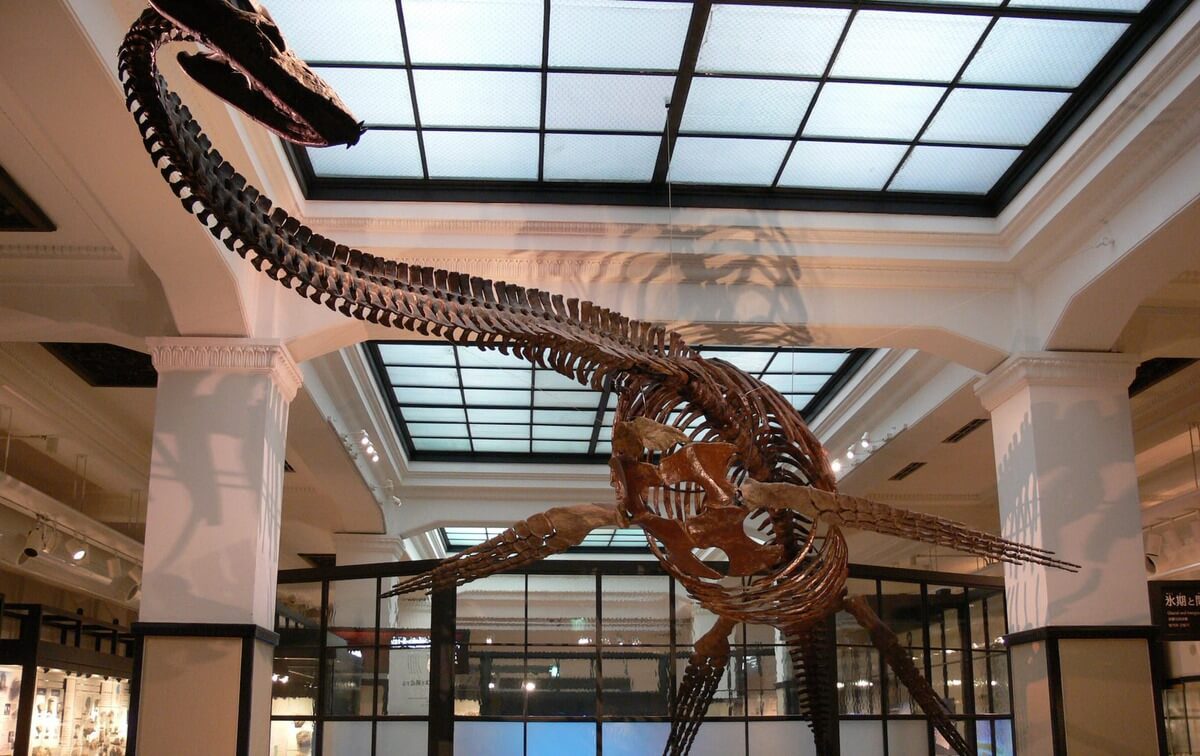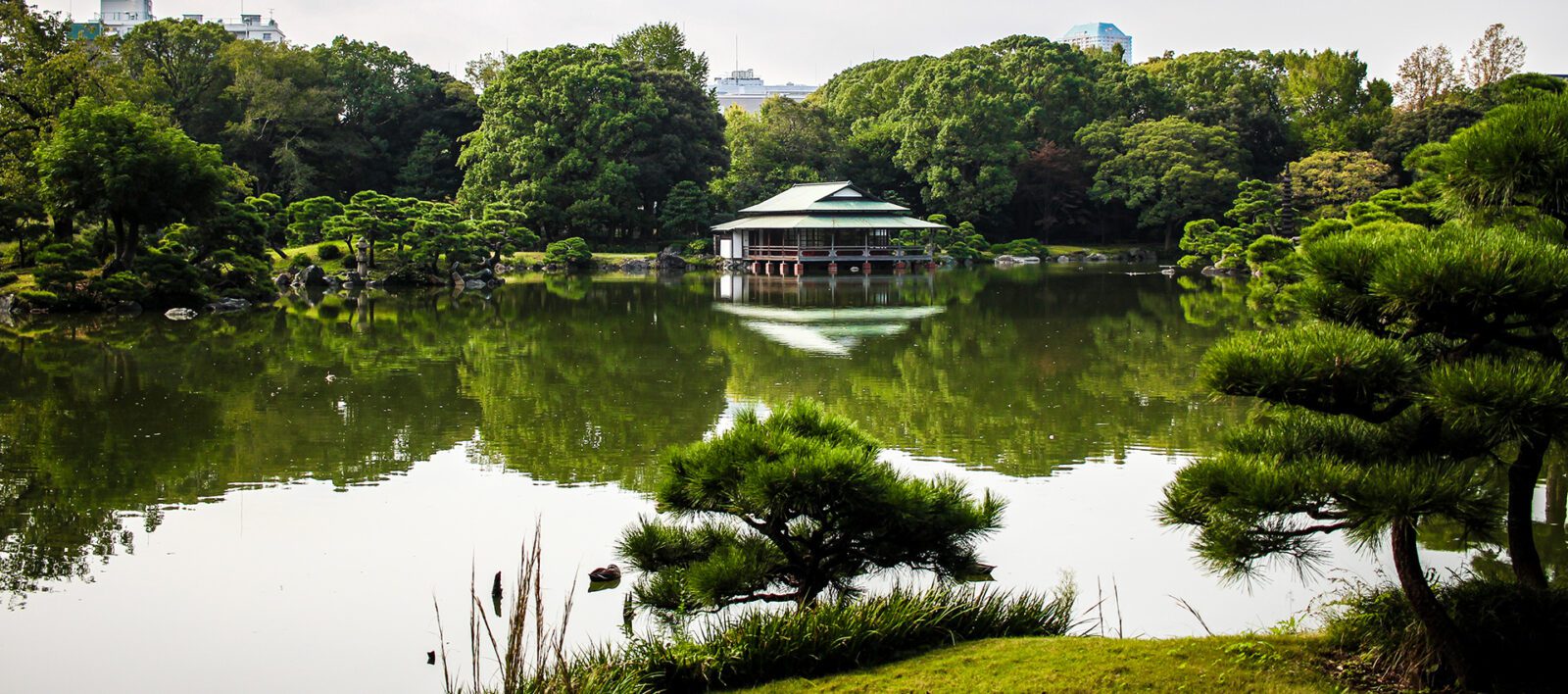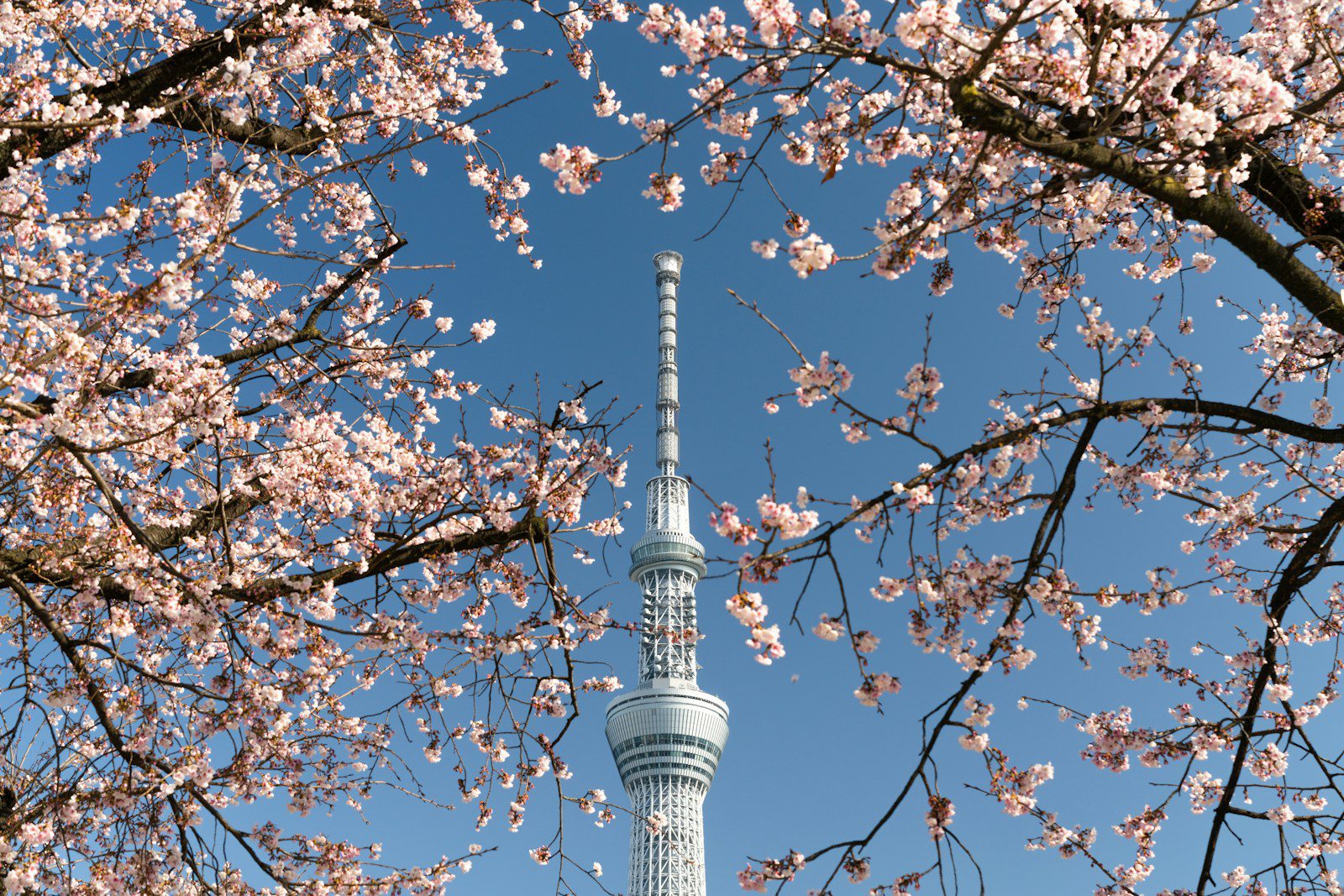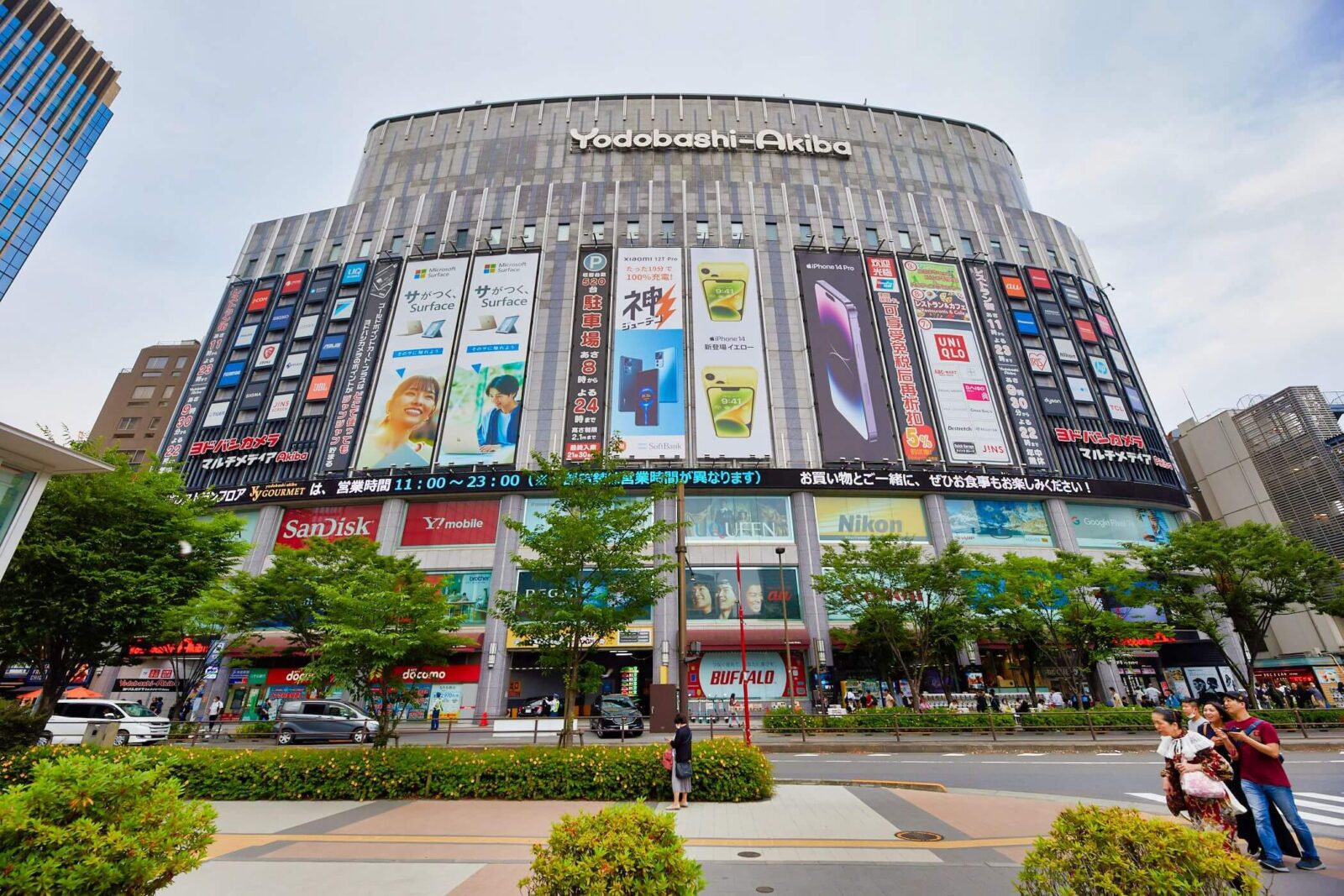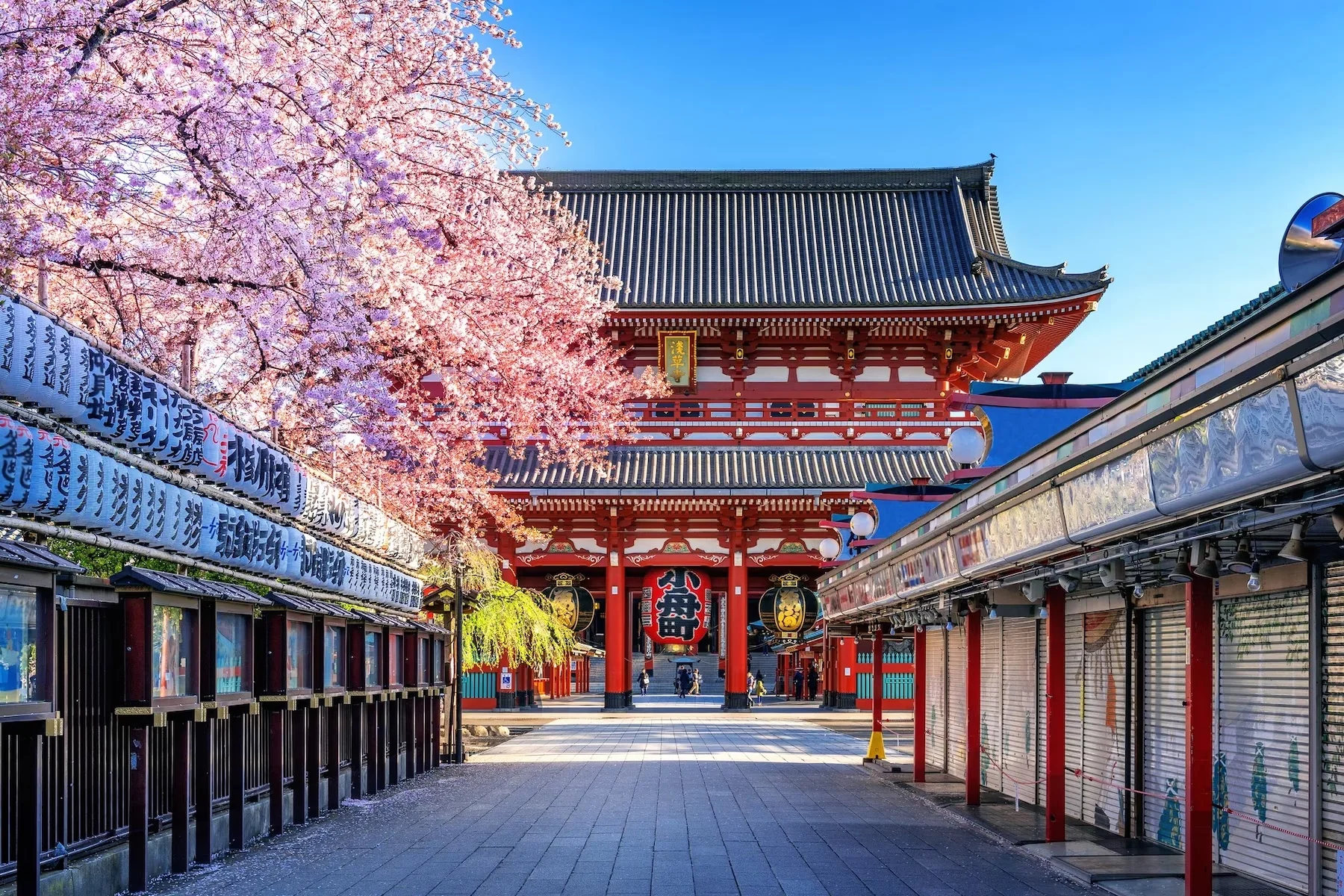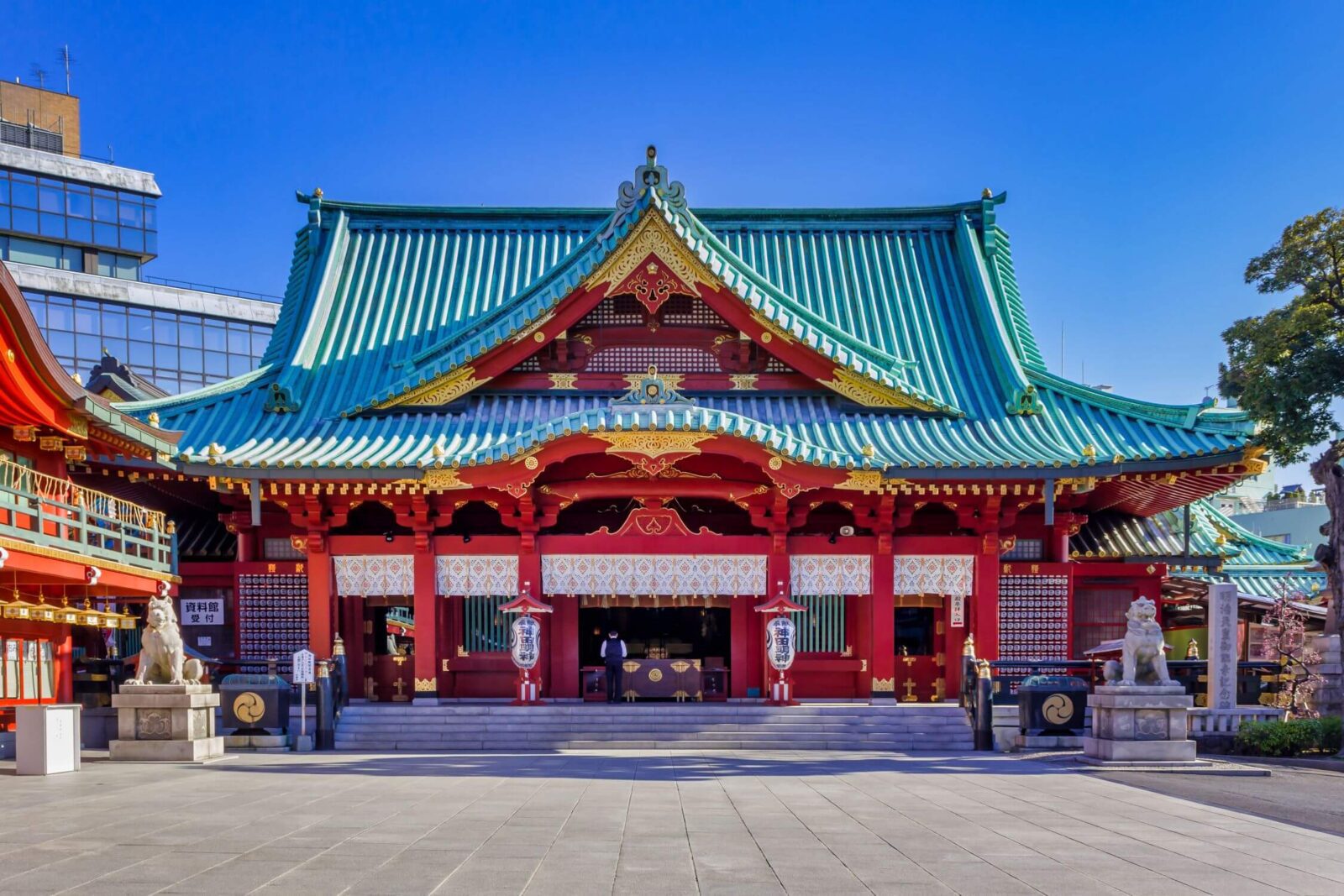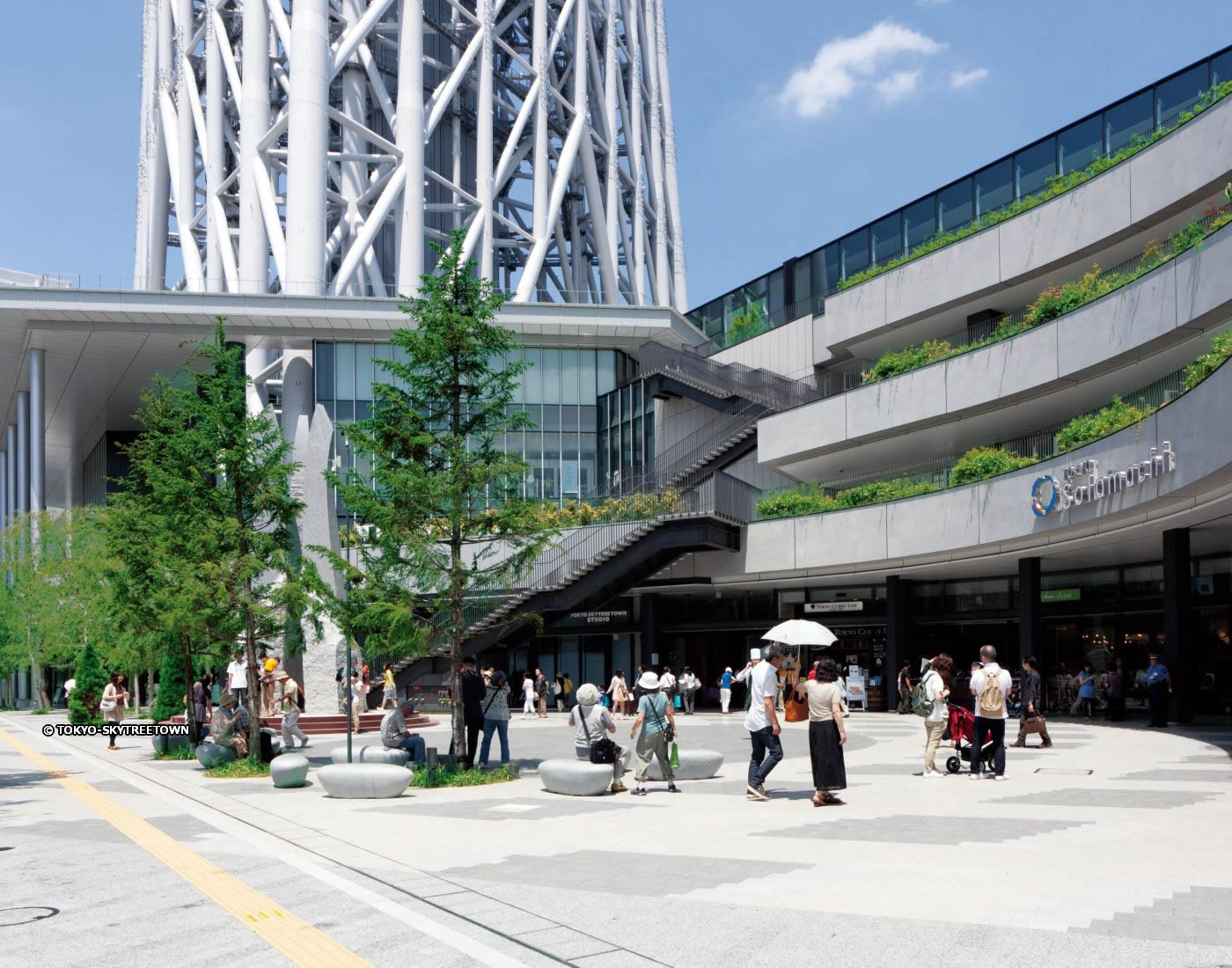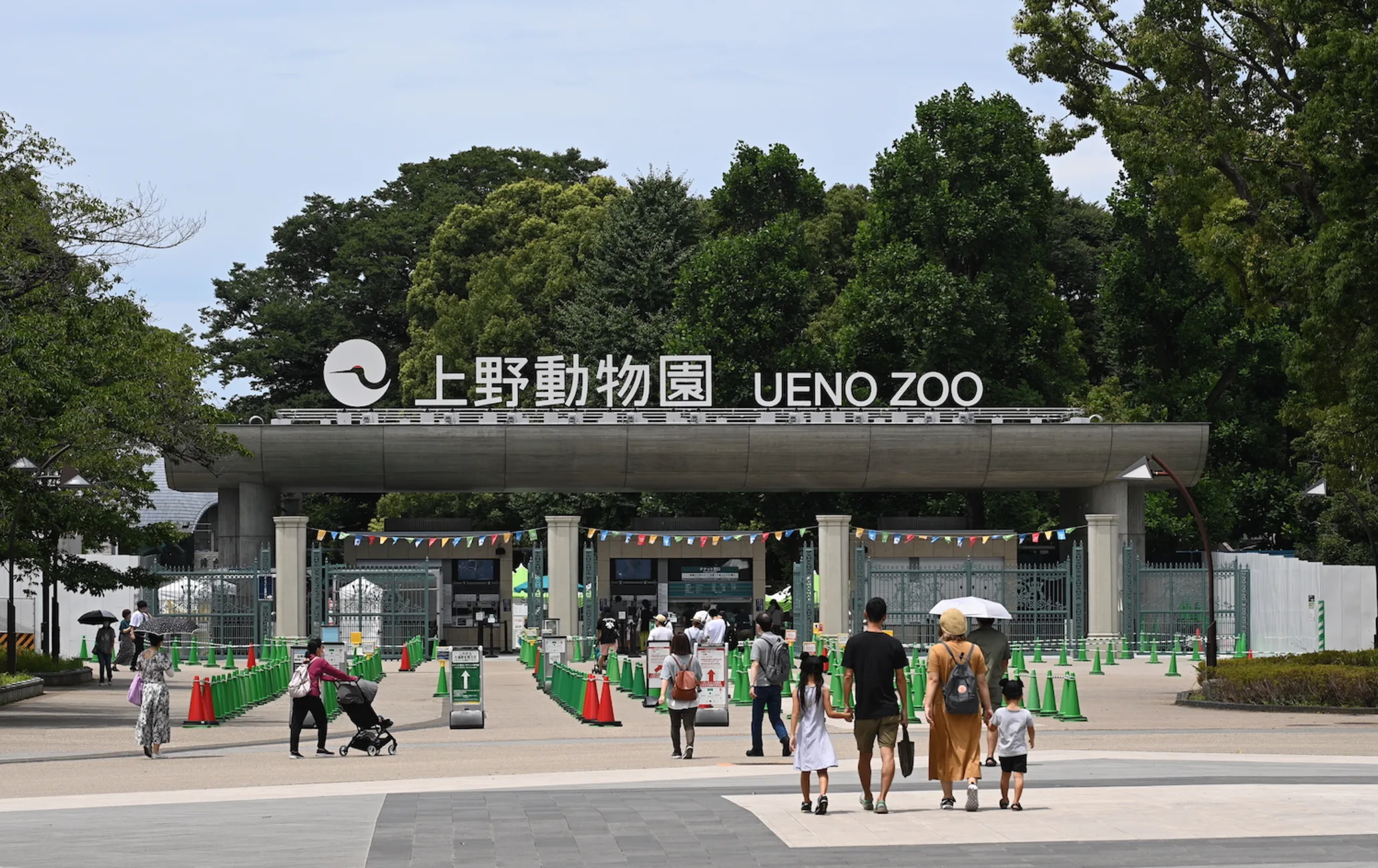Ueno Park
Big city park with a zoo, lake, and museums. Popular park with lots of walking paths, a boat-rental lake, a zoo, and multiple museums.
Overview
Ueno Park, situated in central Tokyo, is a beloved public space attracting millions each year for its natural beauty and cultural significance.
Covering over 130 acres, the park is renowned for its stunning cherry blossoms in spring, with numerous sakura trees creating a pink wonderland for hanami picnics enjoyed by locals and tourists alike.
Besides its seasonal appeal, Ueno Park features peaceful ponds, historic shrines, and scenic paths, providing a tranquil escape from the city’s hustle.
The park is also a cultural center, hosting prominent institutions like the Tokyo National Museum, the National Museum of Nature and Science, and Ueno Zoo, Japan’s oldest zoo, home to popular animals like pandas.
Visitors can admire the historic Kaneiji Temple or visit Toshogu Shrine, honoring shogun Tokugawa Ieyasu.
With easy access via Ueno Station, diverse activities, and vibrant festivals like the Ueno Sakura Festival, Ueno Park is a must-see destination, showcasing Tokyo’s unique mix of tradition, nature, and modern life.
Ueno Park, situated in the heart of Tokyo, serves as a serene haven where Japan’s rich history, art, and natural beauty intersect.
With a notable 4.3-star rating based on over 30,000 visitor reviews, this park offers a unique Tokyo experience, seamlessly blending tranquility with cultural enrichment.
As we explored this expansive urban sanctuary, it became clear why Ueno Park has been a cherished destination for both locals and tourists since its establishment as Japan’s inaugural public park in 1873.
First Impressions: Exploring Ueno Park’s Tranquil Atmosphere
Stepping into Ueno Park feels like discovering a secret dimension where Tokyo’s urban intensity gives way to contemplative calm.
This isn’t merely poetic exaggeration—it’s the genuine sensation that washed over us as we crossed the threshold into this 133-acre sanctuary.
An Urban Sanctuary Awaits
The moment we entered Ueno Park, the cacophony of Tokyo’s streets faded into a gentle hum of nature and leisure.
Towering trees create a lush canopy overhead, providing welcome shade from the sun and forming natural corridors that beckon visitors to explore further.
There’s an immediate sense of space—a rare commodity in Tokyo—that washes over you like a refreshing breeze.
What struck us most was the harmonious coexistence of natural beauty and cultural richness. Cherry blossom trees line pathways that lead to world-class museums, while locals practice tai chi near historic shrines.
Ueno Park serves as both Tokyo’s cultural heart and its lungs, giving everyone room to breathe, reflect, and connect.
Ueno Park Through the Seasons
While Ueno Park is famous worldwide for its spectacular cherry blossom season (typically late March to early April), our visit revealed that this urban paradise transforms beautifully through all four seasons.
Summer brings lush greenery and the sweet scent of lotus flowers blooming in Shinobazu Pond.
Fall paints the landscape in fiery reds and golds, while winter offers a more contemplative atmosphere with fewer crowds.
Planning Your Ueno Park Adventure: Timing and Navigation
Getting to Ueno Park is surprisingly straightforward, even for first-time Tokyo visitors. But timing your visit can dramatically shape your experience of this multifaceted green space.
Finding Your Way to Ueno Park
Located in Taito City, Ueno Park is remarkably accessible. The address—Uenokoen, Taito City, Tokyo 110-0007, Japan—might seem like just another data point, but it represents one of Tokyo’s most conveniently located attractions.
We found that the JR Ueno Station offers the easiest access, with the park entrance just steps away from the Parkside Exit.
If you’re exploring Tokyo by subway, both the Tokyo Metro Ginza and Hibiya lines stop at Ueno Station as well.
Also read: 10 Must-Know Tokyo Metro Shortcuts for Travelers
The park’s proximity to major transportation hubs makes it an ideal starting point for your Tokyo explorations.
We actually encountered unexpected construction near one entrance but quickly found an alternative path—a common occurrence in ever-evolving Tokyo that’s worth anticipating.
When to Visit Ueno Park
One of the park’s most appealing aspects is its generous operating hours. Open daily from 5 AM to 11 PM, Ueno Park accommodates both early birds and night owls.
We’d recommend arriving early (around 8 AM) to enjoy the morning tranquility and watch locals practicing their morning exercises.
The museums within the park typically open around 9:30 AM, making this early window perfect for peaceful strolls before diving into cultural explorations.
For photographers, the “golden hour” just before sunset bathes the park in warm light, creating magical conditions for capturing the scenery.
And don’t overlook an evening visit—Ueno Park takes on a different character after dark, with tastefully illuminated pathways and a more intimate atmosphere.
During summer months, evening visits also offer relief from daytime heat.
What We Loved Most About Ueno Park: Cultural and Natural Highlights
Ueno Park surprised us with its remarkable depth of experiences. What initially appeared to be “just a park” revealed itself as an intricate tapestry of natural settings and cultural institutions seamlessly interwoven.
Ueno Park’s Natural Wonders Meet Cultural Treasures
Ueno Park masterfully balances natural beauty with cultural significance.
The park’s centerpiece, Shinobazu Pond, offers charming boat rentals where we spent a delightful hour paddling among lotus flowers while admiring views of the surrounding cityscape.
The pond’s island Bentendo Temple creates postcard-perfect vistas that capture the essence of Tokyo’s blend of tradition and modernity.
As a state park with deep historical roots, Ueno preserves important cultural landmarks alongside its natural features.
We were particularly moved by the Toshogu Shrine, with its intricate gold leaf decorations and peaceful wooded setting that feels worlds away from the metropolis surrounding it.
The shrine dates back to 1627 and stands as a testament to Ueno Park’s layered history.
Ueno Park’s Museum District: A Cultural Treasure Trove
What truly sets Ueno Park apart is its remarkable concentration of world-class museums.
Within this single green space, you’ll find the Tokyo National Museum (housing the world’s largest collection of Japanese art), the National Museum of Nature and Science, the Tokyo Metropolitan Art Museum, and the National Museum of Western Art (featuring works by Monet, Van Gogh, and Rodin).
We spent an entire day museum-hopping and still didn’t see everything—so don’t try to rush it. Instead, choose one or two museums that align with your interests and give yourself time to appreciate them fully before returning to the refreshing park grounds.
The museums’ proximity to each other makes Ueno Park an efficient cultural destination that delivers quality over quantity.
Ueno Zoo: Tokyo’s Historic Animal Kingdom
Animal lovers shouldn’t miss Ueno Zoo, which has been delighting visitors since 1882. As Japan’s oldest zoo, it combines historical significance with modern conservation practices within the boundaries of Ueno Park.
The giant pandas are understandably the star attraction, but we found ourselves equally charmed by the red pandas and the meticulously maintained Japanese animal exhibits that highlight local wildlife.
The zoo occupies a significant portion of Ueno Park’s western section and requires a separate entrance fee (around 600 yen for adults), but we found it well worth the modest price.
Also read: How to Save Money on Tokyo Attractions With Discount Passes
Unlike some urban zoos that feel cramped, Ueno Zoo’s integration with the larger park setting creates a more spacious atmosphere.
Practical Tips for Making the Most of Ueno Park
After spending several days exploring Ueno Park’s various attractions, we’ve compiled these practical insights to help you navigate this expansive green space with confidence.
Ueno Park for Families: Kid-Friendly Features
Traveling with little ones? Ueno Park truly shines as a family destination. The “Good for kids” designation in visitor information isn’t just a tag—it’s evident in thoughtful features throughout the park.
Beyond the obvious appeal of the zoo, children will delight in the swan boats on Shinobazu Pond and the open spaces perfect for running and playing.
We noticed many families enjoying picnics under the trees, creating memories against the backdrop of one of Tokyo’s most beloved landscapes.
Convenient public restrooms throughout Ueno Park make family outings much more manageable.
We did find that weekends bring local families in droves, so weekday visits offer a more relaxed experience if your schedule allows.
Accessibility in Ueno Park
We were pleased to discover that Ueno Park prioritizes accessibility with wheelchair-friendly entrances and dedicated parking spaces.
Most major pathways are well-maintained and suitable for wheelchairs and strollers, though some of the more secluded garden areas have traditional stone steps.
The major museums all offer accessibility accommodations, making this cultural treasure enjoyable for visitors of all mobility levels.
During our visit, we observed staff helping a visitor navigate a particularly steep section—a testament to the thoughtful service that enhances the Ueno Park experience.
The park’s commitment to accessibility reflects Japan’s growing awareness of diverse visitor needs.
Ueno Park’s Practical Amenities
For those driving, on-site parking is available within Ueno Park, though it comes with a fee (as noted in the “Paid parking lot” designation).
Given Tokyo’s excellent public transportation system, we’d recommend arriving by train or subway to avoid parking hassles.
Dog owners will appreciate that four-legged friends are welcome in the park’s general areas, though not in museums or the zoo.
The onsite services throughout Ueno Park include information kiosks, clean public restrooms, and several casual dining options.
We found the small cafés near Shinobazu Pond offered reasonable prices and authentic local flavors—a welcome surprise in a tourist-heavy area.
Beyond Ueno Park: Connected Experiences and Seasonal Highlights
Ueno Park doesn’t exist in isolation—it’s deeply connected to the surrounding neighborhood and changes dramatically with Tokyo’s distinct seasons.
Understanding these connections enhances your appreciation of this multifaceted destination.
Exploring Around Ueno Park: Neighborhood Connections
While exploring Ueno Park, we discovered that timing can transform your experience.
Weekday mornings offer the most serene atmosphere, while weekends buzz with street performers, food vendors, and a lively community feel.
If you’re seeking a quieter experience, Tuesday and Wednesday visits typically see fewer crowds even during peak tourist seasons.
Don’t miss the underground passage connecting Ueno Park to Ameyoko Shopping Street—a vibrant marketplace where you can sample local street food and shop for everything from fresh seafood to trendy fashion.
This convenient connection makes it easy to combine cultural exploration with an authentic Tokyo shopping experience.
The contrast between the park’s tranquility and the market’s energetic atmosphere creates a perfect balance of experiences.
Ueno Park Through the Seasons: Nature’s Changing Canvas
Each season brings unique highlights to Ueno Park. Spring’s cherry blossoms in Ueno Park are justifiably famous, drawing thousands for hanami (flower viewing) parties.
Summer features the stunning lotus blooms on Shinobazu Pond, while autumn transforms the landscape with colorful foliage. Winter offers special illuminations and a more contemplative atmosphere with far fewer tourists.
Check Ueno Park’s official website or call +81338285644 before your visit to learn about seasonal events and festivals that might coincide with your travel dates.
During our autumn visit, we stumbled upon a traditional tea ceremony demonstration that wasn’t advertised widely—proof that Ueno Park always has unexpected delights to offer the curious traveler.
Ueno Park: A Microcosm of Tokyo’s Spirit
After multiple visits to Ueno Park across different times of day, we’ve come to appreciate how this green sanctuary reflects the broader spirit of Tokyo itself.
Our experiences here have enriched our understanding of Japan’s complex relationship with tradition, nature, and progress.
Why Ueno Park Stands Apart
With its impressive 4.9 author rating (even higher than its public rating of 4.3), Ueno Park offers something genuinely special among Tokyo’s attractions.
What elevates this particular green space isn’t just its size or amenities but how it serves as a living cultural institution where daily life and centuries of history coexist organically.
Unlike other parks that function primarily as recreation spaces, Ueno Park carries the weight of being Japan’s first public park—a pioneering social experiment in Western-style public spaces adapted for Japanese sensibilities.
This history remains palpable as you move through areas that have welcomed visitors since the 1870s.
The Soul of Tokyo Within Ueno Park
As we reluctantly bid farewell to Ueno Park, we realized what makes this place so special isn’t any single attraction but rather how it encapsulates Tokyo’s multifaceted character.
Here, ancient shrine gates stand in the shadow of modern museums. Serene natural settings exist minutes away from one of the world’s busiest train stations.
Locals practice traditional arts alongside international tourists snapping selfies.
Ueno Park epitomizes the essence of Tokyo, seamlessly blending reverence for its heritage with a forward-thinking approach, providing serene escapes amidst the city’s vibrant dynamism, and inviting all to indulge in its riches.
A visit to this extraordinary urban oasis, whether you have a spare hour or a full day to devote, yields profound insights into Japanese culture that transcend the park’s 133 acres, offering a nuanced understanding of the nation’s identity.
As we made our way to the exit, surrounded by families, artists, and elderly couples basking in the late afternoon sun, it was clear that our experience had afforded us a fundamental understanding of Tokyo—a city that, much like Ueno Park, expertly harmonizes tradition and innovation, natural beauty and cultural sophistication, and communal spaces with intimate moments.
Attraction Types
Related Tours
Powered by
Related Tours
Powered by
Related Tours
Powered by
Things to Know
- Onsite services
- Wheelchair accessible entrance
- Wheelchair accessible parking lot
- Public restroom
- Good for kids
- On-site parking
- Paid parking lot
- Dogs allowed
Our Notes & Verdicts
Our Rating: 4.9
Ueno Park is a true gem in Tokyo, scoring a near-perfect 4.9 rating from us.
As we strolled through its lush green spaces, we fell in love with the peaceful Shinobazu Pond, the vibrant Ueno Zoo, and the exceptional museums showcasing Japan’s rich heritage.
The park’s easy accessibility, with wheelchair-friendly paths and family-friendly amenities, made it a welcoming spot for our entire group.
With free admission to most areas and affordable fees for attractions like the zoo, Ueno Park feels like a warm escape from the city’s chaos, whether you’re visiting in spring to see the cherry blossoms or taking a quiet autumn walk.
We can’t wait to go back – it’s a must-visit spot in Tokyo.
🏨 Related Accommodations
-
Asakusa View Hotel
3-17-1 Nishiasakusa, Tokyo 111-8765, Japan
Not sure which hotel to select? Try these hotel search engines below
🍽️ Related Restaurants
Operating Hours
Location
Nearest Train Station(s)
Ueno Station
Nearest Bus Stop(s)
Ueno-Kōen-Yamashita (Ueno Park) Bus Stop No. 9 and Ueno-Kōen (Ueno Park) Bus Stop No. 7
Tokyo Trip Add-Ons
Equip yourself for the ultimate Tokyo adventure with the following add-ons, curated just for you.
Frequently Asked Questions (FAQs)
Ueno Park is famous for its rich blend of history, culture, and natural beauty right in the heart of Tokyo.
It’s one of Japan’s oldest public parks, established in 1873, and is especially well-known for its spectacular cherry blossom displays in spring, which draw huge crowds for hanami, or flower-viewing parties.
The park is also home to some of Tokyo’s most important museums, like the Tokyo National Museum and the National Museum of Western Art, as well as Ueno Zoo, Japan’s oldest zoo.
Its grounds were once part of the grand Kaneiji Temple, adding a layer of historical significance that you can still sense as you wander through its leafy paths.
A visit to Ueno Park is definitely worth your time, whether you’re a lover of art, history, or just want a peaceful escape from the city’s bustle.
Many travelers find themselves spending an entire day here, moving from museums to shrines, or simply relaxing by Shinobazu Pond.
The park’s atmosphere changes with the seasons-cherry blossoms in spring, vibrant foliage in autumn, and lively festivals throughout the year-so there’s always something special to experience.
Families, solo travelers, and couples alike find plenty to enjoy, from street food vendors to paddle boats and even street performers.
Entry to Ueno Park itself is completely free, making it a welcoming spot for everyone. You can stroll the grounds, enjoy the scenery, and soak up the atmosphere without spending anything.
However, if you want to visit attractions like the museums or Ueno Zoo within the park, there’s a separate admission fee for each of those facilities.
Disclaimer
While we at Tokyo Trip Guide do our best to show you accurate prices, we just can't promise they'll stay the same. Here's why: since we're not actually selling anything ourselves - we work with partner companies who set their own prices - we can't control what deals they offer. That's why it's best to check directly with our suggested deal providers to see their latest prices for attraction tickets.
Just so you know, if you end up buying something from the providers we list here, we might get a small commission. We'd be really happy if you used our recommended links to make your bookings!

